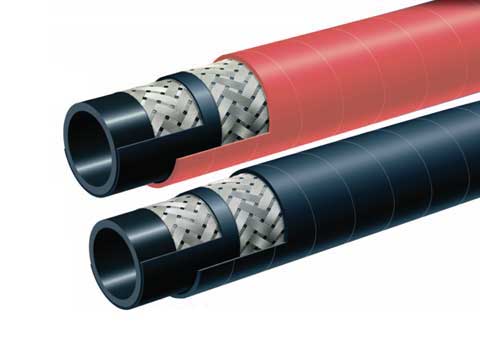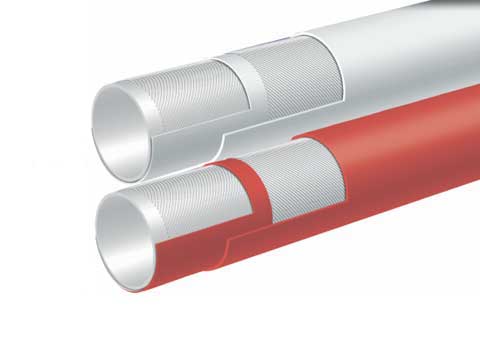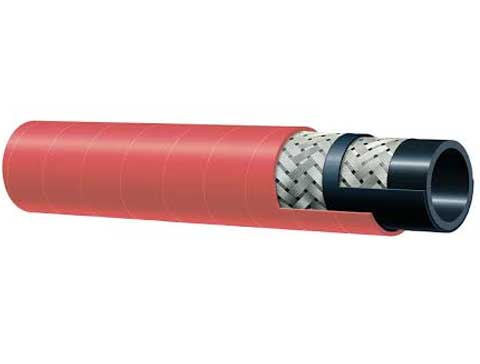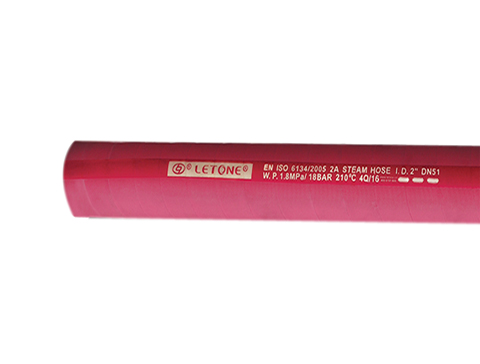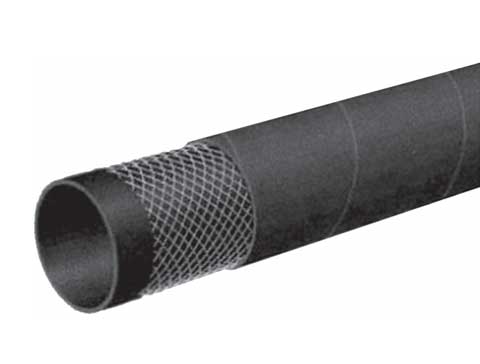UPE (Ultra-High Molecular Weight Polyethylene) industrial hoses are widely used in various industries for the transportation of chemicals, solvents, and other fluids. It is essential to ensure that UPE hoses meet the necessary standards and regulations to ensure their safety, reliability, and compliance with industry requirements. This article provides guidance on how to check UPE industrial hoses for compliance with standards, focusing on three key areas: material standards, performance standards, and labeling requirements. By conducting these checks, industrial operators can ensure that UPE hoses meet the necessary criteria for their intended applications.
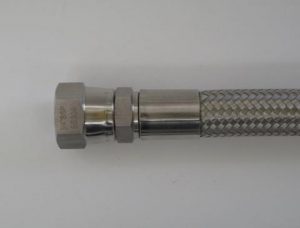 I. Material Standards
1.1 Material Composition and Quality
The first step in checking UPE industrial hoses for compliance is to verify the material composition and quality. UPE hoses should be made from high-quality UPE material that meets the necessary industry standards. To ensure compliance, consider the following:
1.1.1 Material Certification: Request the manufacturer to provide material certification that confirms the UPE material meets the required standards. This certification should specify the UPE grade, chemical composition, and any relevant physical properties, such as tensile strength, elongation, and impact resistance.
1.1.2 Material Purity: UPE hoses should have minimal impurities and additives to ensure the best chemical resistance and longevity. Verify that the UPE material used in the hoses has a high level of purity.
1.1.3 Material Testing: It is beneficial to review any testing conducted on the UPE material itself, such as tests for chemical resistance, mechanical properties, and temperature resistance. This information can help determine if the material meets the necessary standards.
1.2 Reinforcement Materials and Design
In addition to the UPE material, the reinforcement layers of the industrial hose play a crucial role in its performance and compliance. Consider the following aspects:
1.2.1 Reinforcement Type: Verify that the reinforcement material used in the hose, such as textile fibers, steel wire, or synthetic materials like aramid, meets the required standards for strength, flexibility, and pressure resistance.
1.2.2 Reinforcement Design: Assess the design of the reinforcement layers to ensure that they provide adequate structural integrity and resistance to pressure. Ensure that the number and arrangement of reinforcement layers align with the intended application and the maximum pressure requirements.
II. Performance Standards
2.1 Pressure Ratings and Burst Pressure
Checking UPE industrial hoses for compliance with pressure ratings and burst pressure requirements is critical to ensure their safe and reliable operation. Consider the following:
2.1.1 Pressure Rating: Verify that the UPE hose is rated for the maximum pressure it will encounter in the application. Manufacturers typically provide pressure ratings for their hoses, which should align with industry standards and regulations.
2.1.2 Burst Pressure: Determine the burst pressure of the UPE hose, which indicates the maximum pressure at which the hose will fail catastrophically. Ensure that the burst pressure exceeds the maximum operating pressure to provide an adequate safety margin.
2.2 Temperature Range
Assessing the temperature range of UPE hoses is crucial to ensure their suitability for the intended application. Consider the following:
2.2.1 Maximum Operating Temperature: Determine the maximum temperature at which the UPE hose can safely operate without experiencing degradation or failure. Ensure this temperature aligns with the requirements of the application.
2.2.2 Minimum Operating Temperature: Determine the minimum temperature at which the UPE hose can remain flexible and functional without the risk of cracking or rupturing. Verify that this temperature aligns with the operating conditions of the application.
2.3 Electrical Conductivity
In certain applications, electrical conductivity requirements may exist to prevent the accumulation of static charges or to enable grounding. Verify if the UPE hose meets any specific electrical conductivity standards or requirements, especially in applications involving flammable or combustible materials.
III. Labeling and Certification Requirements
3.1 Manufacturer's Markings
Checking the manufacturer's markings on UPE hoses is crucial to ensure compliance and traceability. Look for the following information:
3.1.1 Manufacturer's Name or Trademark: The manufacturer's name or trademark should be clearly marked on the hose, indicating the responsible party.
3.1.2 Hose Identification: The hose should be labeled with a unique identification code or number that allows for traceability and reference to specific specifications or certifications.
3.1.3 Date of Manufacture: The date of manufacture helps determine the age of the hose and can be important for warranty claims or determining the lifespan of the hose.
3.2 Compliance Certifications
Ensure that the UPE hose comes with appropriate compliance certifications to validate its adherence to industry standards. Look for the following certifications:
3.2.1 ISO Certification: Check if the UPE hose manufacturer holds ISO certifications, such as ISO 9001 (Quality Management System) and ISO 14001 (Environmental Management System), to ensure the company follows standardized processes and quality control.
3.2.2 Regulatory Compliance: Depending on the specific industry or application, ensure that the UPE hose complies with relevant industry regulations and standards, such as REACH (Registration, Evaluation, Authorization, and Restriction of Chemicals) for chemical safety or specific standards for food-grade applications.
Conclusion:
Checking UPE industrial hoses for compliance with material standards, performance standards, and labeling requirements is essential to ensure their safety, reliability, and adherence to industry regulations. By verifying the material composition and quality, assessing reinforcement materials and design, and checking pressure ratings, temperature ranges, and electrical conductivity, industrial operators can select hoses that meet their specific application requirements. Additionally, examining manufacturer's markings and compliance certifications provides further assurance of compliance and traceability. By conducting these checks, industrial operators can confidently choose UPE hoses that meet the necessary standards and ensure the safe and efficient transportation of chemicals, solvents, and fluids in their operations.
I. Material Standards
1.1 Material Composition and Quality
The first step in checking UPE industrial hoses for compliance is to verify the material composition and quality. UPE hoses should be made from high-quality UPE material that meets the necessary industry standards. To ensure compliance, consider the following:
1.1.1 Material Certification: Request the manufacturer to provide material certification that confirms the UPE material meets the required standards. This certification should specify the UPE grade, chemical composition, and any relevant physical properties, such as tensile strength, elongation, and impact resistance.
1.1.2 Material Purity: UPE hoses should have minimal impurities and additives to ensure the best chemical resistance and longevity. Verify that the UPE material used in the hoses has a high level of purity.
1.1.3 Material Testing: It is beneficial to review any testing conducted on the UPE material itself, such as tests for chemical resistance, mechanical properties, and temperature resistance. This information can help determine if the material meets the necessary standards.
1.2 Reinforcement Materials and Design
In addition to the UPE material, the reinforcement layers of the industrial hose play a crucial role in its performance and compliance. Consider the following aspects:
1.2.1 Reinforcement Type: Verify that the reinforcement material used in the hose, such as textile fibers, steel wire, or synthetic materials like aramid, meets the required standards for strength, flexibility, and pressure resistance.
1.2.2 Reinforcement Design: Assess the design of the reinforcement layers to ensure that they provide adequate structural integrity and resistance to pressure. Ensure that the number and arrangement of reinforcement layers align with the intended application and the maximum pressure requirements.
II. Performance Standards
2.1 Pressure Ratings and Burst Pressure
Checking UPE industrial hoses for compliance with pressure ratings and burst pressure requirements is critical to ensure their safe and reliable operation. Consider the following:
2.1.1 Pressure Rating: Verify that the UPE hose is rated for the maximum pressure it will encounter in the application. Manufacturers typically provide pressure ratings for their hoses, which should align with industry standards and regulations.
2.1.2 Burst Pressure: Determine the burst pressure of the UPE hose, which indicates the maximum pressure at which the hose will fail catastrophically. Ensure that the burst pressure exceeds the maximum operating pressure to provide an adequate safety margin.
2.2 Temperature Range
Assessing the temperature range of UPE hoses is crucial to ensure their suitability for the intended application. Consider the following:
2.2.1 Maximum Operating Temperature: Determine the maximum temperature at which the UPE hose can safely operate without experiencing degradation or failure. Ensure this temperature aligns with the requirements of the application.
2.2.2 Minimum Operating Temperature: Determine the minimum temperature at which the UPE hose can remain flexible and functional without the risk of cracking or rupturing. Verify that this temperature aligns with the operating conditions of the application.
2.3 Electrical Conductivity
In certain applications, electrical conductivity requirements may exist to prevent the accumulation of static charges or to enable grounding. Verify if the UPE hose meets any specific electrical conductivity standards or requirements, especially in applications involving flammable or combustible materials.
III. Labeling and Certification Requirements
3.1 Manufacturer's Markings
Checking the manufacturer's markings on UPE hoses is crucial to ensure compliance and traceability. Look for the following information:
3.1.1 Manufacturer's Name or Trademark: The manufacturer's name or trademark should be clearly marked on the hose, indicating the responsible party.
3.1.2 Hose Identification: The hose should be labeled with a unique identification code or number that allows for traceability and reference to specific specifications or certifications.
3.1.3 Date of Manufacture: The date of manufacture helps determine the age of the hose and can be important for warranty claims or determining the lifespan of the hose.
3.2 Compliance Certifications
Ensure that the UPE hose comes with appropriate compliance certifications to validate its adherence to industry standards. Look for the following certifications:
3.2.1 ISO Certification: Check if the UPE hose manufacturer holds ISO certifications, such as ISO 9001 (Quality Management System) and ISO 14001 (Environmental Management System), to ensure the company follows standardized processes and quality control.
3.2.2 Regulatory Compliance: Depending on the specific industry or application, ensure that the UPE hose complies with relevant industry regulations and standards, such as REACH (Registration, Evaluation, Authorization, and Restriction of Chemicals) for chemical safety or specific standards for food-grade applications.
Conclusion:
Checking UPE industrial hoses for compliance with material standards, performance standards, and labeling requirements is essential to ensure their safety, reliability, and adherence to industry regulations. By verifying the material composition and quality, assessing reinforcement materials and design, and checking pressure ratings, temperature ranges, and electrical conductivity, industrial operators can select hoses that meet their specific application requirements. Additionally, examining manufacturer's markings and compliance certifications provides further assurance of compliance and traceability. By conducting these checks, industrial operators can confidently choose UPE hoses that meet the necessary standards and ensure the safe and efficient transportation of chemicals, solvents, and fluids in their operations.

